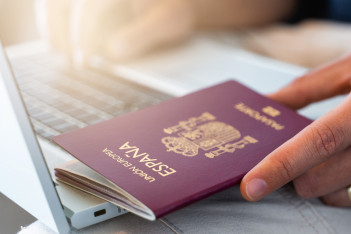I am studying in the third year of the State University of Economics and Technology.I specialize in contractual, economic and corporate law, in particular, I provide consultations and write articles.
An Equipment Lease Agreement (ELA) is an important document for leasing equipment such as servers, computers, and peripherals.Such an agreement defines the terms of temporary use of the equipment without the need to purchase it.
Content of the ELA contract:
An Equipment Lease Agreement (ELA) is a legal document that regulates the terms of equipment lease between a lessor and a lessee. It includes various clauses that define the rights and obligations of the parties. Here is a typical ELA:
- Parties to the contract: Name and details of the person or company providing the equipment for rent. The name and details of the person or company renting the equipment.
- Equipment description: Model, serial number, technical specifications, number of units. Indication of the condition of the equipment upon transfer (new, repaired, used, etc.).
- Transfer of equipment: The address and conditions under which the equipment is transferred to the lessee.
- Lease Term: Determination of the start and end date of the lease. Conditions for extending the lease term, if provided for.
- Rent: The cost of rent, the size and frequency of payments (monthly, quarterly, etc.). Payment methods (bank transfer, check, electronic payment, etc.).
- Equipment Terms of Use: How the equipment should be used, limitations and guidelines. Responsibilities of the lessor to update the software, if applicable.
- Maintenance and Repair: Who is responsible for maintenance and repair of the equipment (lessor or lessee). How and where repairs should be carried out, notification of the need for repairs.
- Insurance: Determines the party responsible for insuring the equipment against loss or damage. Conditions and types of insurance policies that must be concluded.
- Liability for loss or damage: Determines the amount of repair or replacement costs in the event of damage or loss of equipment. It states how and when the tenant must notify the landlord of damage or loss.
The procedure for concluding an equipment lease agreement (Equipment Lease Agreement, ELA)
The procedure for concluding an equipment lease agreement (Equipment Lease Agreement, ELA) includes several key stages that ensure the correct design and execution of the agreement. Here is the step-by-step process for concluding an ELA contract:
- Preparation for the conclusion of the contract: Determine what equipment is necessary for your business and under what conditions. Choose specific equipment from a supplier or lessor.
- Negotiation and terms of the lease: Negotiate the terms of the lease with the landlord, including the amount of the rent, the term of the lease, the terms of maintenance and repairs. Clarify all the details, such as the rights and obligations of the parties, the conditions for returning the equipment.
- Preparation of documents: Prepare a draft contract, including all necessary items (equipment description, lease term, rent, terms of use, insurance, etc.). It is recommended to consult a lawyer specializing in lease matters to check and adjust the terms of the contract. Contracts, certificates, certificates or documents confirming the lessor's ownership of the equipment are required.
- Signing the contract: The parties must carefully familiarize themselves with all the terms of the contract and verify the correctness of the information. The contract is signed by authorized representatives of both parties. Signatures may be required on each page or on special signature pages. If necessary, the contract can be notarized, especially for large transactions or in jurisdictions where this is a requirement.
- Fulfillment of contract terms: Arrange for the transfer of equipment according to the terms of the contract, including condition checks and inventory. Make rent payments according to the schedule specified in the contract. Follow the conditions for maintenance and repair of the equipment. Provide equipment insurance, if required by contract.
The Equipment Lease Agreement (ELA) is a critical document for business, as it regulates the terms of use of the equipment that is necessary for the operation of the company.
Question
How does the ELA contract affect the reduction of capital inputs?
Answer
ELA allows businesses to use state-of-the-art equipment without the need for significant initial investment, which can be especially important for small and medium-sized businesses. Leasing equipment instead of buying it helps preserve capital for other needs and reduces the financial burden on the business. ELAs often include provisions for periodic equipment upgrades or replacements, allowing businesses to use new technologies without having to purchase new units.
Question
How to prevent risks of property damage?
Answer
The contract can put responsibility for maintenance and repairs on the lessor, which reduces risks and costs for the business. The terms of the contract may provide for equipment insurance, which provides protection against financial loss in the event of damage or theft.
Services of a lawyer when concluding a contract
Legal assistance in concluding an Equipment Lease Agreement (ELA) can be extremely valuable, as it ensures correctness, legality and protection of the interests of each party. Here are the main types of legal services at various stages of concluding a contract:
Lawyer consultation and legal analysis of the situation: Lawyers online can help determine the specific needs of the business in terms of equipment and evaluate whether the proposed contract meets those needs. Making recommendations on the types of equipment and lease terms that are best for the business.
Legal services for the preparation of the contract: The lawyer services online can prepare a draft contract, taking into account all the necessary conditions, such as the description of the equipment, the term of the lease, the rent, the terms of maintenance and repair. Checking the existing terms of the contract offered by the lessor and making the necessary changes or additions to protect the interests of the lessee. Compilation and verification of accompanying documents, such as acts of acceptance and transfer of equipment, insurance and others.
Lawyer services during negotiations and dispute resolution: A lawyer can act as a representative of your company in negotiations with the landlord to achieve more favorable terms. Resolving conflicts or disputes that may arise during negotiations.
Legal Check: Checking all the lessor's legal documents, such as documents proving the ownership of the equipment. Assessment of potential legal risks that may be associated with the conclusion of the contract and proposal of measures to minimize them.
The lawyer help when concluding an ELA agreement not only ensures the correctness of the agreement, but also helps to avoid legal and financial risks, ensures compliance with the law and protection of your interests throughout the lease period. The lawyer advice allows you to focus on the main business activities, reducing risks and ensuring effective management of resources.




































